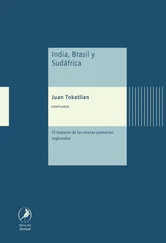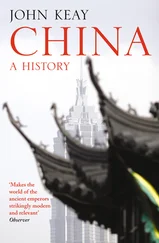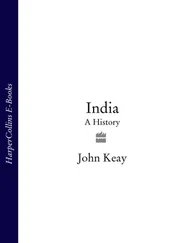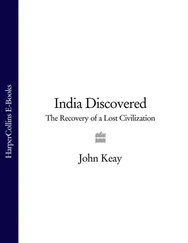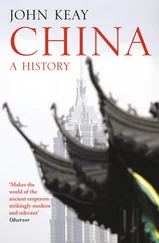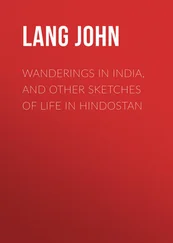Clearly these variations are significant. Were Kanishka’s dates certain, it might be possible to be a little more dogmatic about his achievements, although the same can hardly be said of his elusive successors. If there has to be a blind summit somewhere along north India’s chronological highway, the second to third centuries AD would seem as good a place as any. Should, however, the controversy be resolved, it could mean whole-scale revision of our understanding of the preceding centuries; upgrading even chronological highways can have dramatic results.
ACROSS THE ROOF OF THE WORLD
When Pakistani and Chinese engineers began construction of a road link between their two countries in the late 1970s, eyebrows were raised in Delhi and elsewhere. The planned ‘Karakoram Highway’ was seen as evidence of a menacing alignment between Mao-tse Tung’s China and Zulfiqar Ali Bhutto’s Pakistan. As well as being politically sinister and strategically unprecedented, it was thought geographically perverse. For if ever there was a frontier decreed by nature it was the Himalayan chain. This, after all, was India’s Great Wall; behind it the peoples of the subcontinent had traditionally sheltered from the whirlwinds of migration and conquest which ceaselessly swept the arid pastures beyond. Moreover, nowhere was this wall more formidable than at its western bastion where, in the far north of Pakistan, the Great Himalaya becomes entangled in the pinnacles of the Hindu Kush and the glaciers of the mighty Karakoram. Extremes of temperature, colossal natural erosion, frequent seismic activity and recent glacial acceleration also make this the most unstable region on earth. Breaching the rampart with the viaducts, tunnels and easy gradients of an all-weather, two-lane highway looked to be short-sighted, provocative and exceedingly challenging.
Nevertheless, at fearful cost in lives and plant, the road was built. ‘The eighth wonder of the world’ was duly hailed, and convoys of battered trucks and buses began occasionally to emerge at its either end after eventful days of motoring across ‘the roof of the world’. The benefits have been mixed. At five thousand metres above sea-level, the Sino – Pakistan border on the blizzard-swept Khunjerab Pass has witnessed a modest flow of trade but little other intercourse. The road has been more of a boon to the isolated mountain communities of Pakistan’s ‘Northern Areas’, although the discreet charms of their valleys have been prejudiced in the process. Only to archaeologists and historians has the road opened a wholly welcome perspective.
That from India the teachings of the Buddha had originally spread to China via central Asia had long been known. The Han dynasty had opened trade with the West via the so-called Silk Route in the second century BC; the Route ran north of Tibet, on through Sinkiang and then down the Oxus through Bactria to Bukhara, Iran and the Mediterranean. The Han dynasty had also been in diplomatic contact with the Yueh-chi long before the latter, as Kushanas, entered India. Later, when Kushana dominion spread in a great arc from Sinkiang through Afghanistan and across the Indus into India, an obvious India–China conduit was created. Additionally Kanishka had clearly revived Ashoka’s policy of patronising the Buddhist sangha and promoting the spread of Buddhist doctrine. From Chinese sources it was even known that the first Buddhist missionaries to China had set out from India in 65 AD. It was therefore probably under the Parthians or the Kushanas that the monks Dharmaraksa and Kasyapa Matanga had made their way to China, there to found the first monastery and begin their work of preaching and translating the sacred doctrines. In their footsteps would follow the procession of teachers and artists, of icons, texts and relics which over the next three hundred years would nurture the new faith and diffuse new art forms in China and beyond.
Traditionally their route is supposed to have proceeded from Peshawar to Kabul and over the Hindu Kush via Bamiyan, a tight valley above which two gigantic statues of the Buddha were carved high in the vertical cliffs. There they stood for 1500 years until in March 2001 Taliban zealots tested them with anti-tank mines, targeted them with artillery and finally toppled them with dynamite. (Exactly six months later Bamiyan’s twin Buddhas were followed to extinction by New York’s ‘twin towers’; the first outrage inspired the second and has often been attributed to the same agency.) Other remains in Bactria itself still attest the Buddhist presence, and thence north and east across the Pamirs, round the desert of Takla Makan and across Lop Nor a succession of Buddhist sites marks the trail to China. ‘The road is long,’ reported a later Chinese pilgrim who had made the return journey to India; looping laboriously right round that mountain bastion of India’s ‘Great Wall’ it is all of three thousand kilometres. There is no doubt that it was indeed an important route for the traffic of both ideas and commodities; but what the road-builders in the 1970s discovered was that there had been a shorter and better signposted route by way of the upper Indus and Hunza rivers along the line of their Karakoram Highway.
As reconstructed by Dr Ahmad Hasan Dani, Pakistan’s leading archaeologist, the historical trail begins north of Taxila, where the modern highway strikes off into the hills. Suitably enough the first ‘signpost’ is a Kharosthi version of Ashoka’s Major Rock Edict engraved on two badly weathered boulders at Mansehra. The road runs between them and, in view of the incidence of other Ashokan inscriptions at major route intersections, it seems safe to infer that the Indus route into the mountains was in use in the third century BC and here linked with feeder routes from Taxila, Peshawar and Swat. Thence the new road traverses the switchback hills of Kohistan, where innumerable caves and rock drawings continue the Buddhist theme; one drawing is identified by an inscription as being of ‘the monastery of Maharajah Kanishka’. As the roadway wriggles above, and then through, the awesome Indus gorges, more such graffiti on cliffs and rocks – ‘beside the tunnel’, ‘above the petrol station’ – record the passage of individual monks and the presence of stupas and viharas .
West of Chilas, beneath the snowy massif of Nanga Parbat, the Indus valley opens out into a scorching lunar wasteland, devoid of vegetation but garish with rocks of every hue. Here one of many inscriptions mentions the Kushana king Wima Kadphises. Nearer the windswept little town a scene etched on a boulder by the river clearly identifies the Shaka king Maues; it is ‘the first proof of the conquest of this region by the Scythian ruler’ 8who seems to have actually ‘invaded’ the Panjab by this route. On the other side of Chilas one of many illustrated boulders is known as the Rock of Gondophares; its inscription lauds the Parthian king who was ‘doubting Thomas’s’ patron.
A sculpted Buddha and more stupas lie in the valleys round Gilgit. Thence both highway and Buddhist trail funnel into the Hunza valley for the spectacular climb up to the glaciers. K2 and associated peaks lie to the east with the Khunjerab Pass and the Chinese border dead ahead. The highway terminates at Tashkurgan, an ancient staging post on the main Silk Route. As a final reminder that this vital trail and all the territory through which it passed lay within the Kushana empire, there is a veritable data-bank of ancient kings, cults and passing strangers, including notices of both the first Kadphises and again of Kusana Devaputra [‘son of God’] Maharajah Kaniska , on the so-called Sacred Rock of Hunza.
The new Karakoram Highway which runs along its southern face … led to the discovery of this monument of world importance that had remained hidden for centuries. The Sacred Rock has stood adamantly through the ravages of time and maintained the carvings and writing of men to tell us about the long-forgotten history of the place and of the pathway along which man travelled from Gandhara to China. 9
Читать дальше


